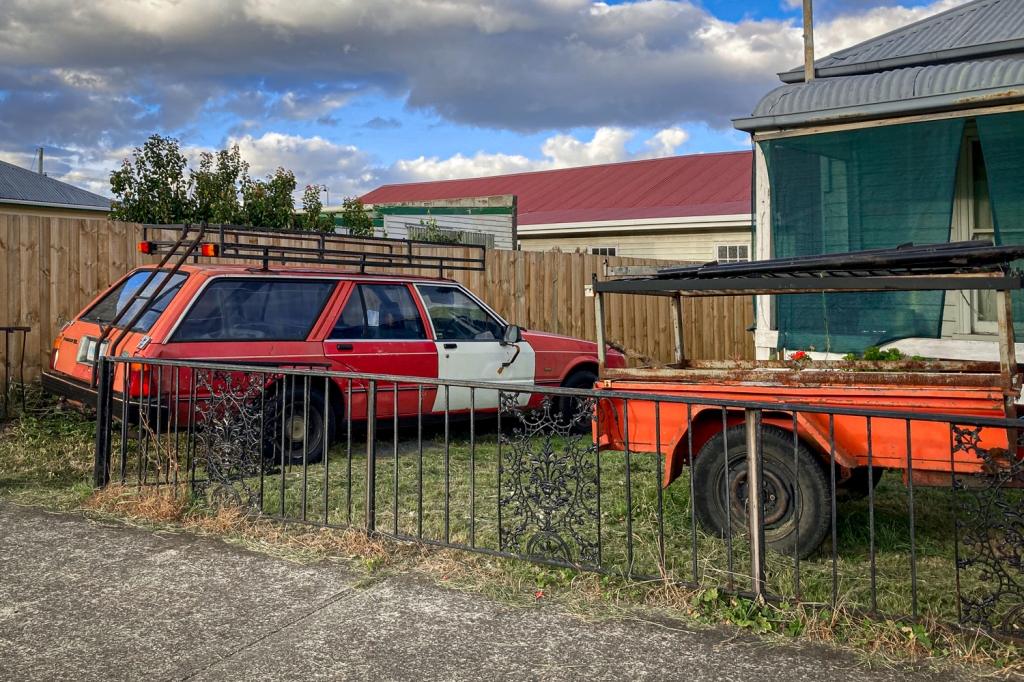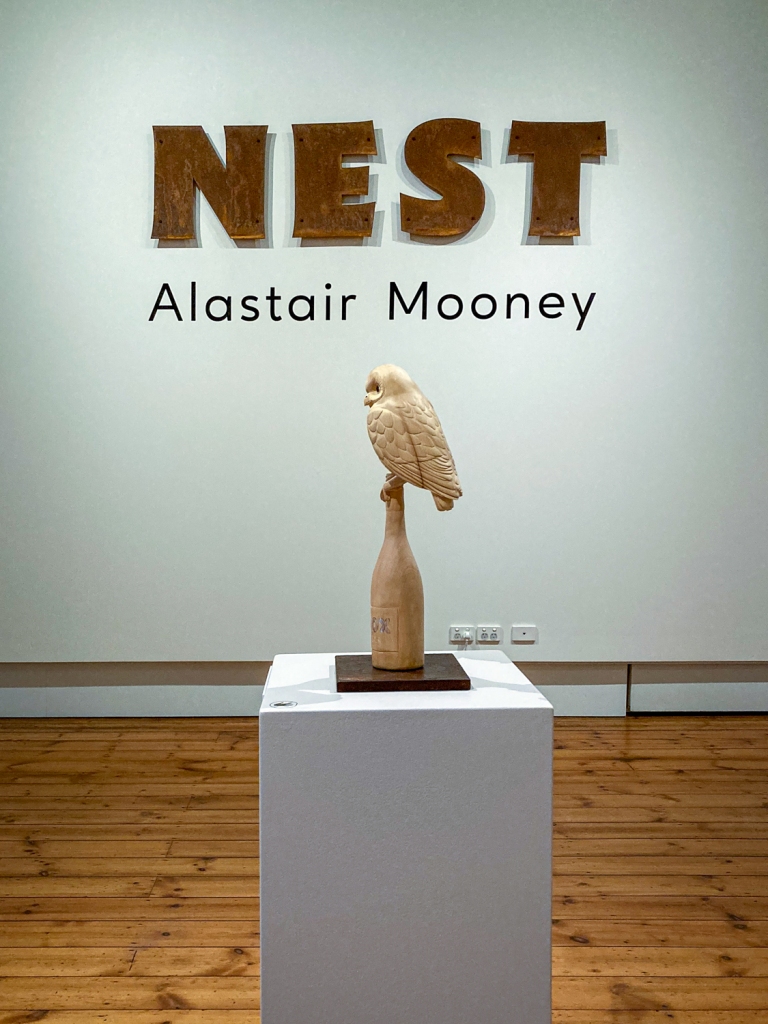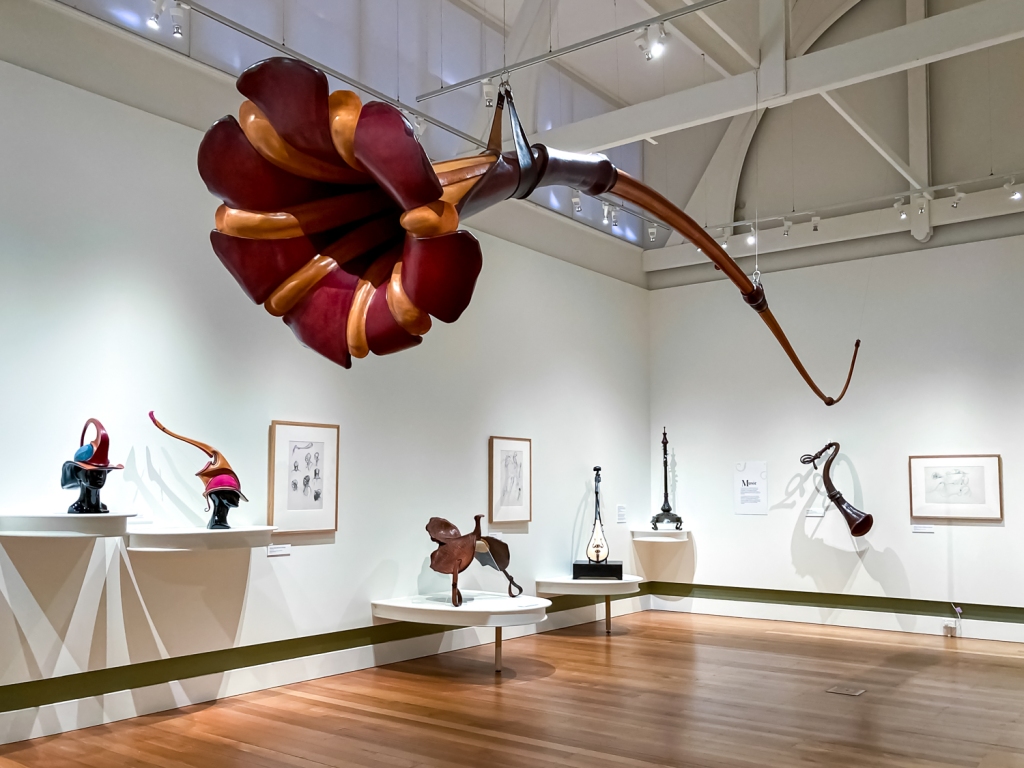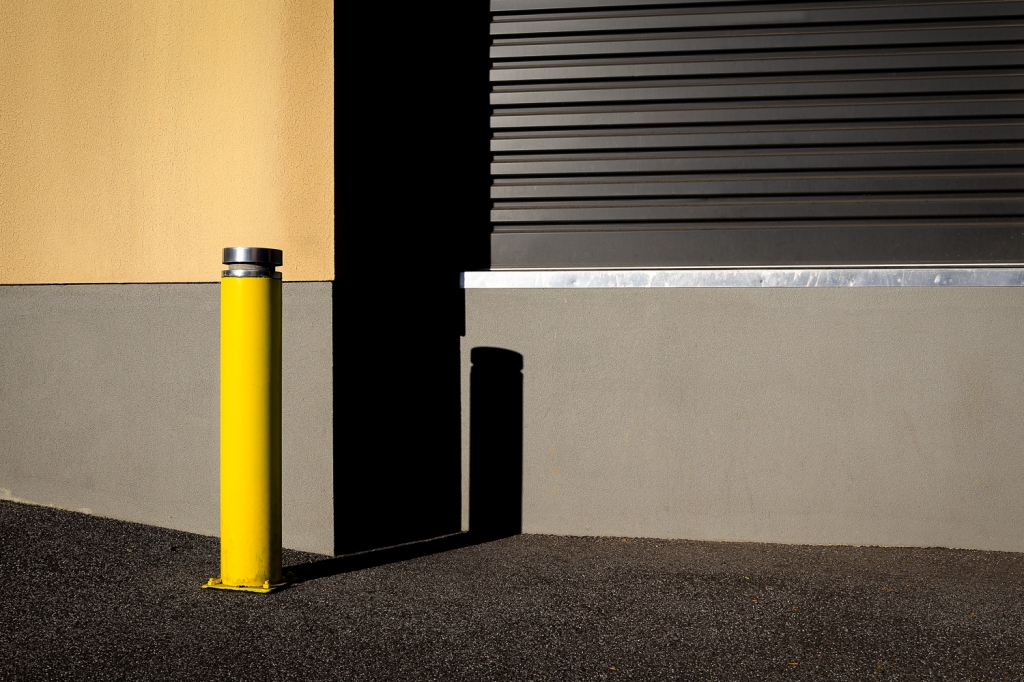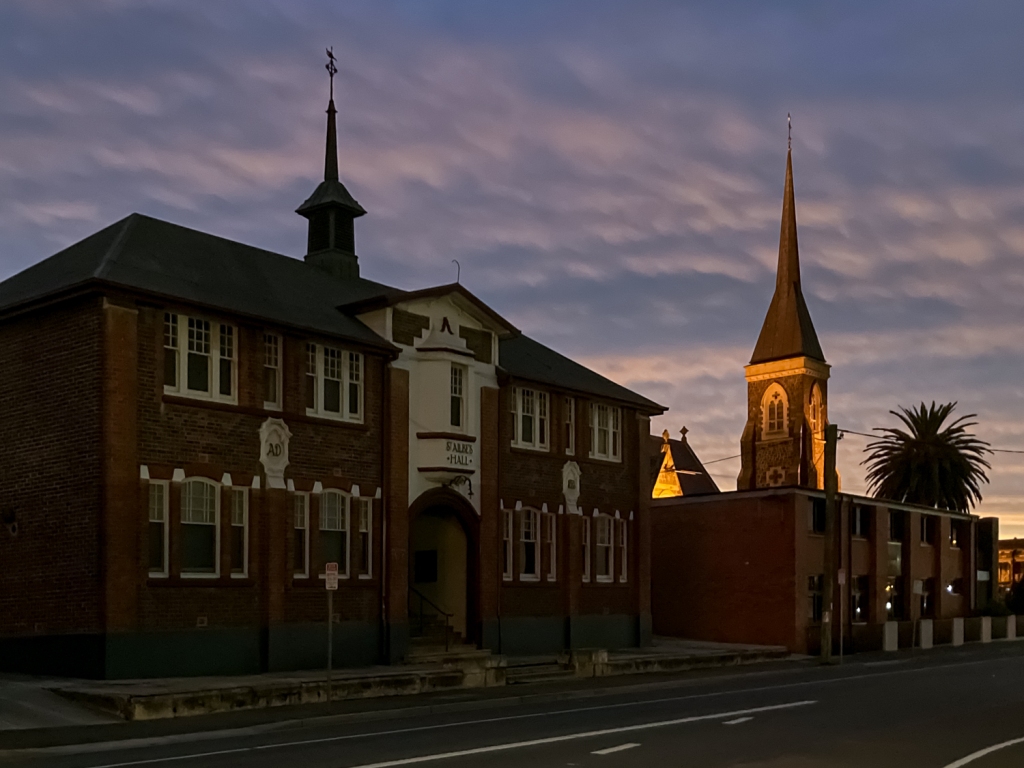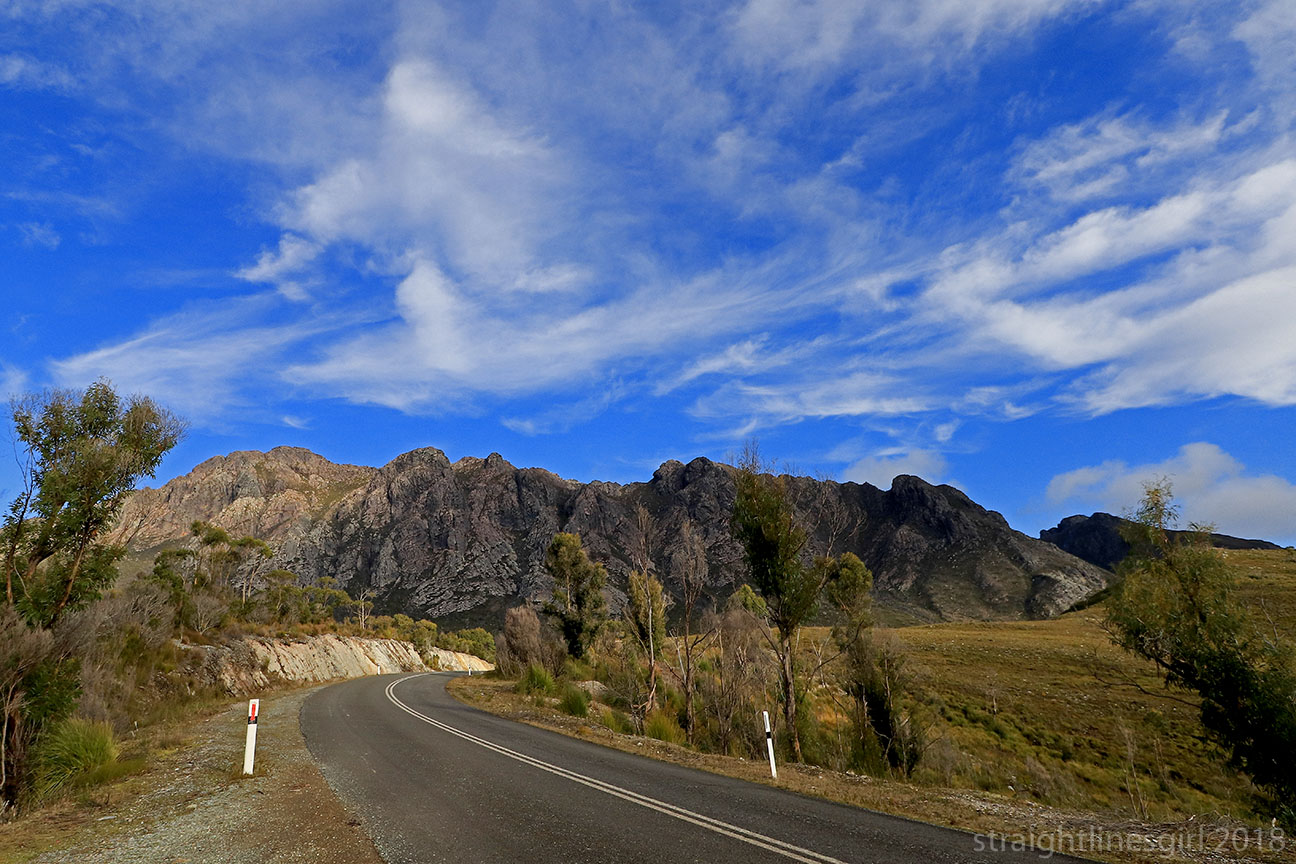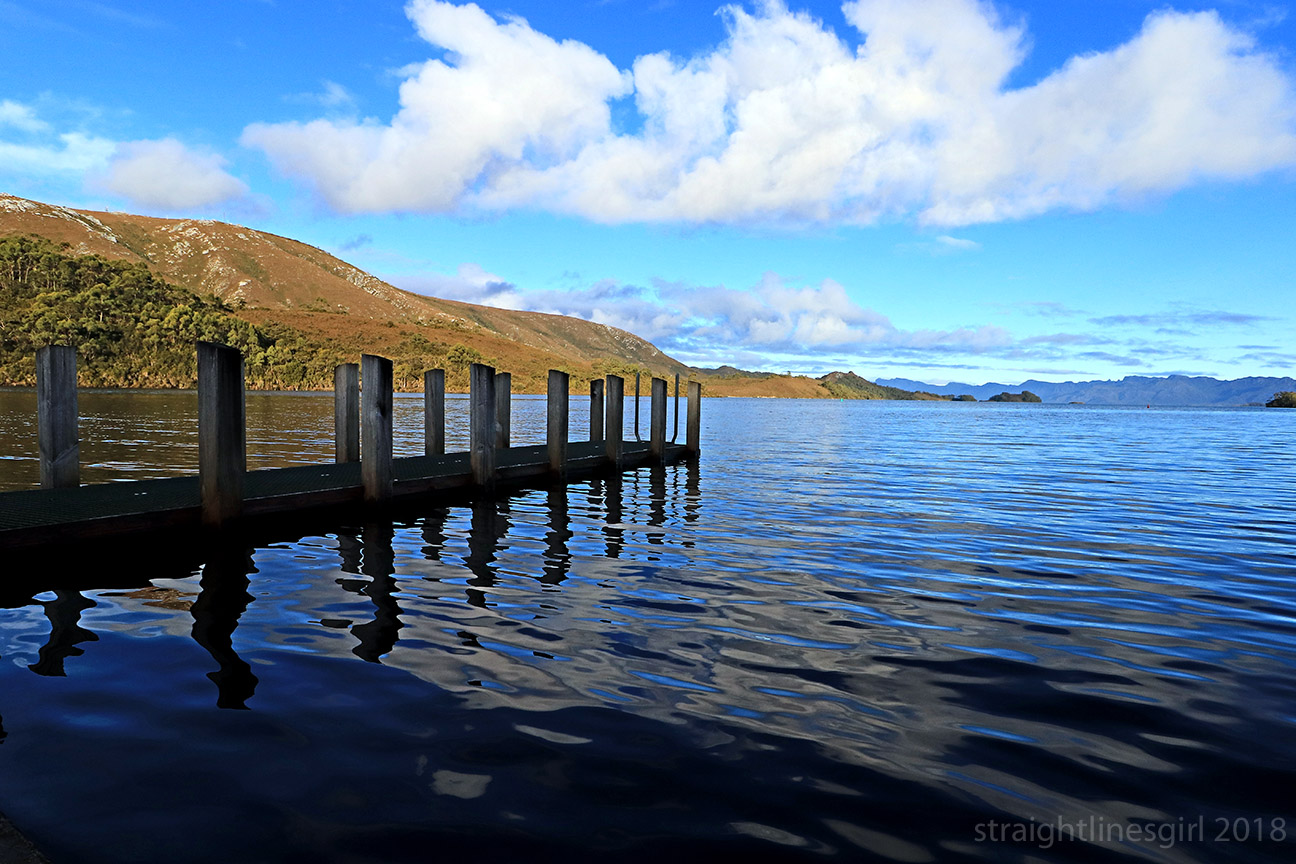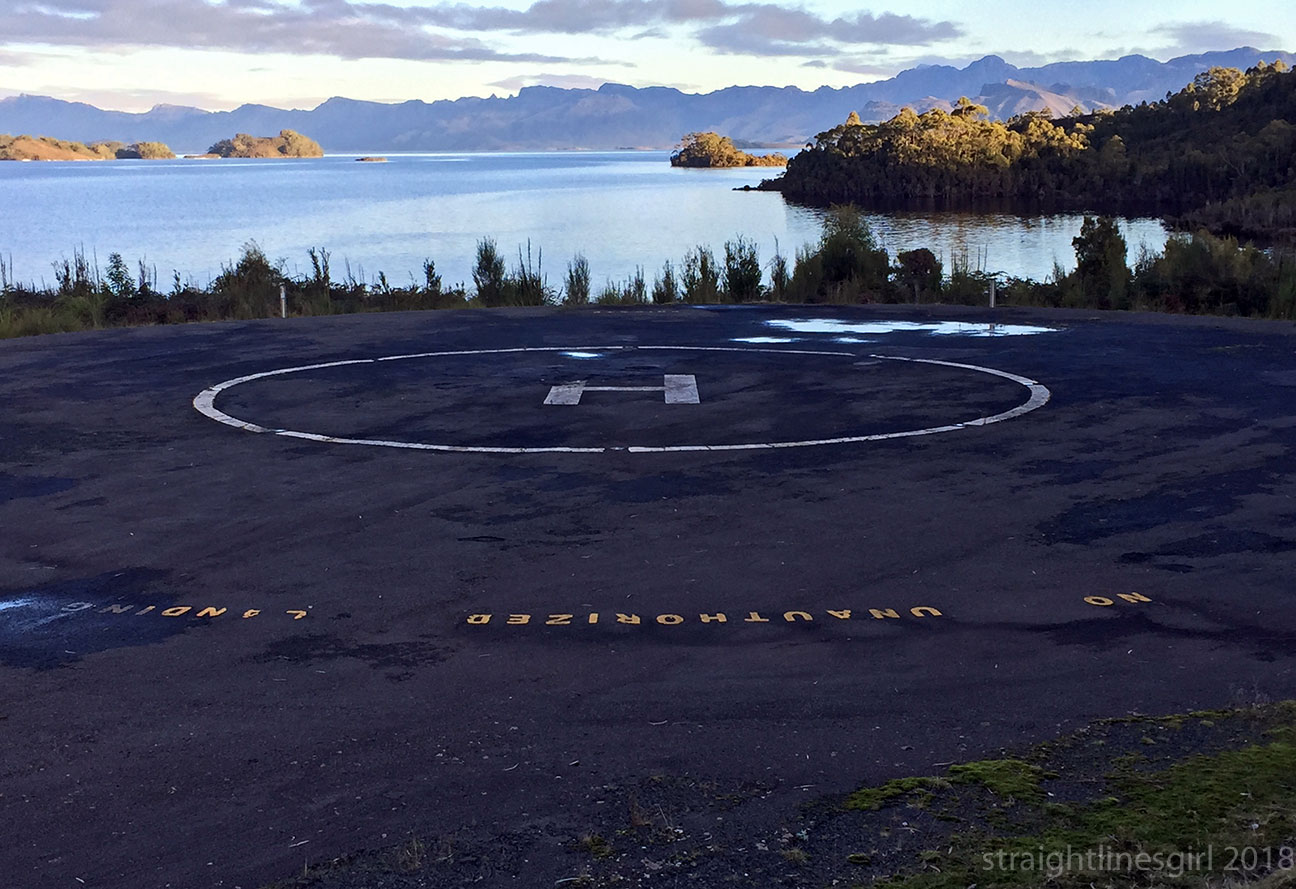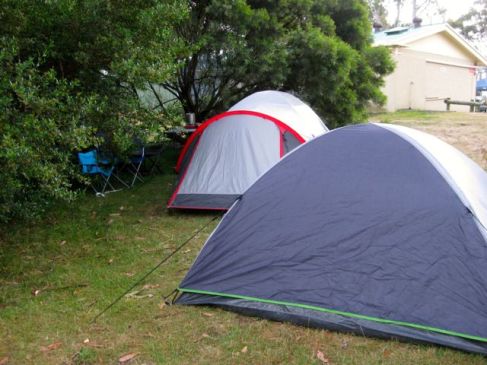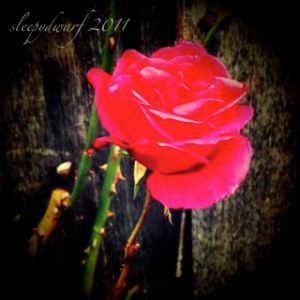Week 16/2021: week of 19 April
This week I started Chapter 4 of the Change Journal, which is called the Circle Trick. This is a technique by Sigur∂ur Ármannsson, which Tim Jaudszims, the Change Journal author, says he has modified a bit. It asks you to list your tasks chronologically in the order you have to do them if they have specific times they have to be done by, otherwise you can add them however you want. There’s a list of symbols you can use to tag that the tasks, a bit like the symbols that people use in bullet journals.
I didn’t know who Sigur∂ur is so I googled him. He is an Icelandic designer who seems to like fonts a lot. His website is font.is and a quick search of his blog archive finds a post from February 2009, where he talks about his way of recording tasks in a notebook to fit the way he uses the Getting Things Done (GTD) methodology. He’d been using this system for years, he says, and decided it needed a name, so he called it Circle. Just out of interest, Ryder Carroll, the inventor of the Bullet Journal system, says he was working on his system in 2007 and launched it in 2013.
I’m not going to compare the two systems. They use different symbols to denote to-dos, degrees of importance, and various stages of completion or cancellation (and bullet journalling goes way (way) beyond a simple to-do list). But looking at it from the simplest perspective, I don’t suppose it matters what symbols you use. You might start out with one set and change them as you get familiar with the system, how it works and what you actually need to symbolise. There are no rules.
I tried it for a week, as a slightly different system to the one I currently use.
I say my “system”. That is, perhaps, being a bit generous.
What I like about Circle is that Sigur∂ur uses it in conjunction with a to-do app, so he might write something on the list, but he might later decide to move it out of the notebook into the electronic system. That item gets marked as completed in his notebook so that he can only see things he has to still do there. Of course, this relies on you actually checking your to-do app.
I check mine regularly.
Ahem.
Starting out, I felt a bit sceptical of the system as it appears in the Change Journal but, having seen Sigur∂ur’s original post and putting a couple of things back that Tim had removed, I think it makes more sense to me now.
The idea of putting things in chronological order put me off but I don’t think I read it properly the first time because they only need to be listed chronologically if they have to be done at a specific time. Nevertheless, on Day 1, I tried to allocate times to the tasks I wanted to do. I had a seven hour work day and I listed eight tasks, some of which relied on other people getting back to me, one of which was a quick phone call, and others that were not particularly well-defined, breaking all the rules about specifying an actual task.
At the end of the day, I had completed four of my eight tasks, worked on three of them and not done one at all. Actually I had completed five. One of them was to watch some training videos but I didn’t say how much I wanted to do, so I watched two videos and got up to the next written exercise and called it done.
The photo gives you an idea. This was the only day I allocated times to the tasks. I’d generally do that in my calendar if I needed to get something done at a certain time rather than on the to-do list.
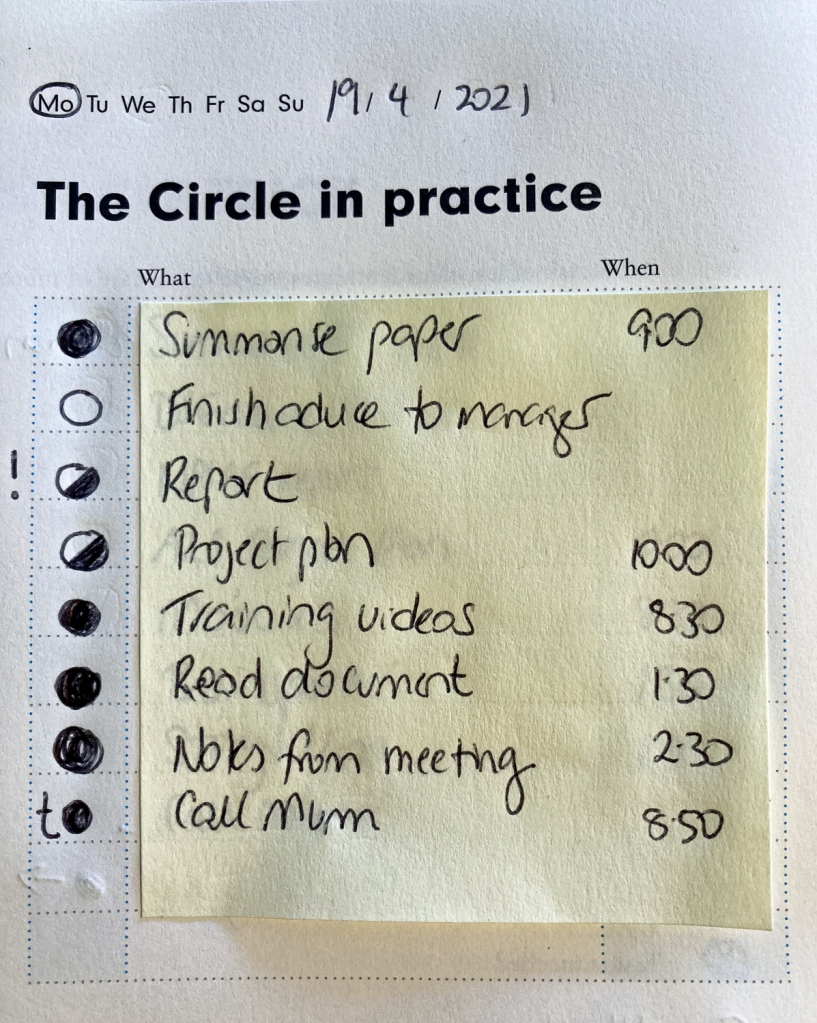
I liked seeing very clearly what I’d done, with a bunch of filled-in circles, and where I’d overcommitted myself with a bunch of open circles. I think this is a technique I could keep working with, or at least incorporate some of the ideas into the way I plan my day. I think it’s worth persevering with.
Regular projects
There are several things on my list that I have made a regular commitment to doing in the hope that this will be more likely to make me do them. I worked on these ones this week.
- Thing 5: Spend an hour a week working through my annoying undone things list. If you read last week’s post, you’ll know that I ordered a new external SSD to replace my apparently failing internal hard disk drive. It arrived on Tuesday and I set it up to be my computer’s main hard drive. Everything seems to be working fine and I’ve had no issues with it beachballing or freezing or being super slow. I really should have done this months ago instead of complaining about it.
- Thing 8: Spend an hour a week working on Kramstable’s videos. I spent an hour on Sunday afternoon working on this. It’s coming together well, I think.
- Thing 9: Write my mother’s life story. I went to see my Mum on Thursday as normal. She’d got held up at the doctor’s so we didn’t get as much time as we normally do.
- Thing 17: Brainsparker gym*. I worked on lesson 2 of module 5.
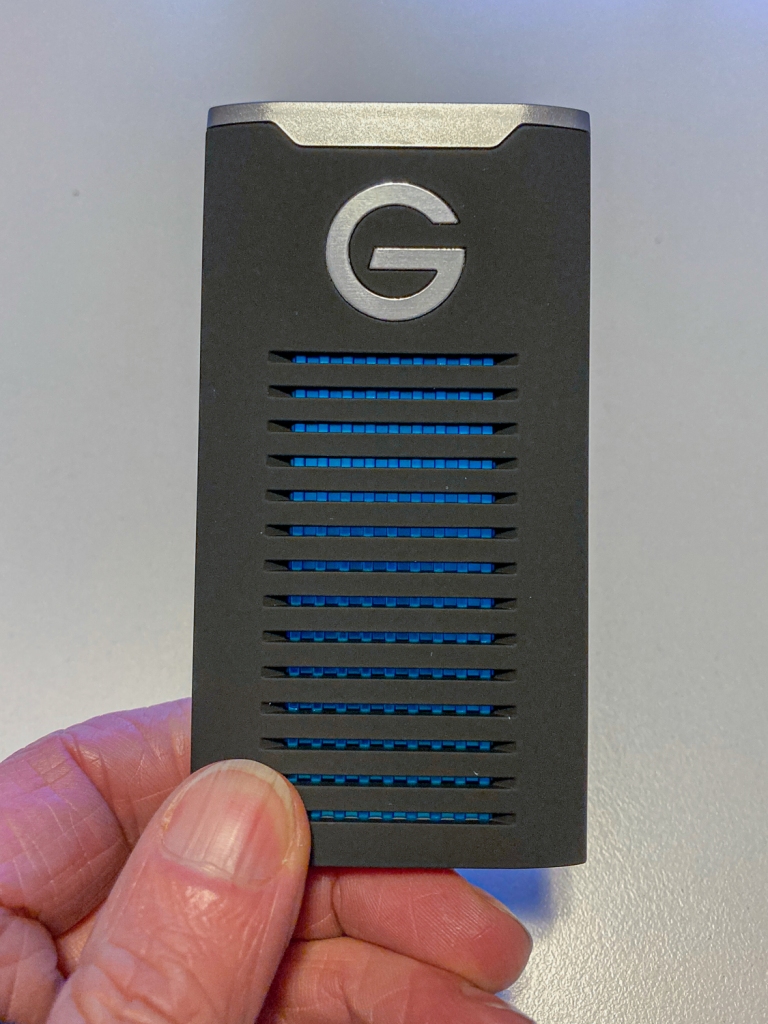

21 for 2021 summary
- Things completed this week: 0
- Things completed to date: 1 (1)
- Things I progressed: 6 (4, 5, 8, 9, 17, 20)
- Things in progress I didn’t progress: 9 (2, 6, 7, 10, 11, 13, 14, 16, 18)
- Things not started: 5 (3, 12, 15, 19, 21)
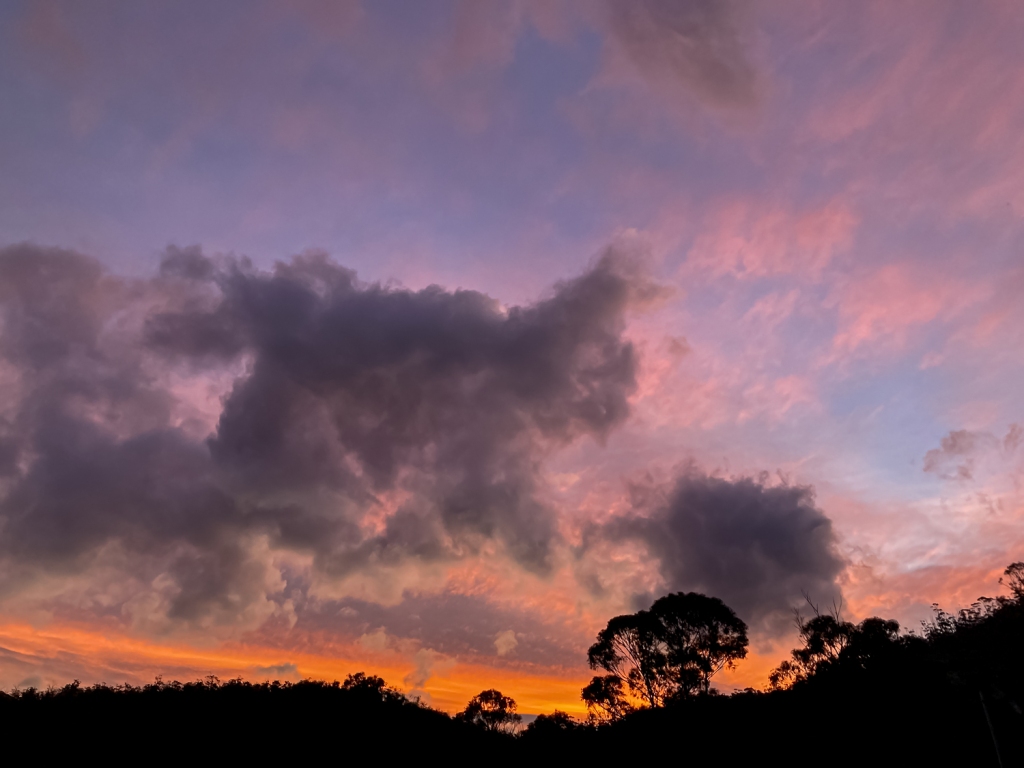
Blast from the past
Following on from my 10-year review of my blog, here’s another one of my favourite posts from 2011. This one is from 27 October 2011: The big 300, which is about reaching the 300-post milestone and still wondering what my blog is about.
When did I listen and what did I learn this week?
This week I went to two event organised by the City of Hobart’s Bush Adventures team. On Thursday I went to a session about playpus conservation in Hobart’s waterways and learned many things about the platypus. For example, they can climb up waterfalls and their bills are nothing like ducks’ bills. I also learned that the plural of platypus can never be platypi, as that is a Latin plural and the word “platypus” has its origins in Greek words for “flat foot”.
On Saturday, I went on a “fungi foray” with a small group led by mycologist Richard Robinson. And that is the first thing I learned, that a microbiologist who studies fungi is a mycologist. This was a lovely two-hour exploration of some of the fungi growing on the foothills of kunanyi. I think I mainly learned how much I don’t know about fungi—and how many of them there are all around us that we never notice.
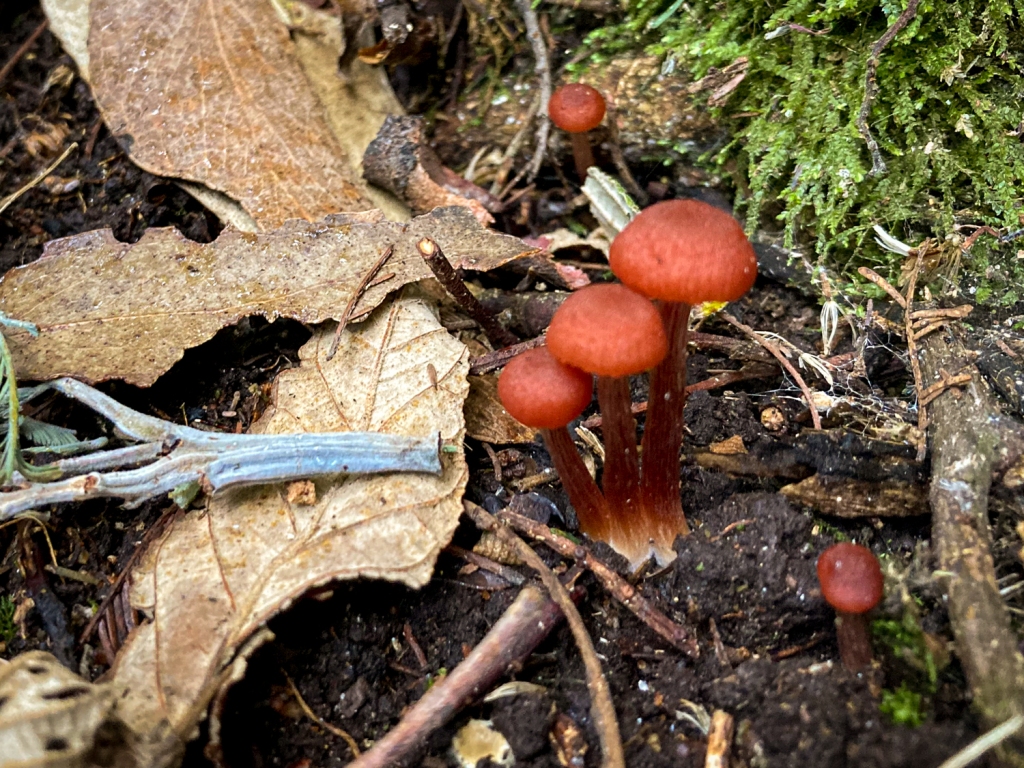
I also saw some wicked spider webs.
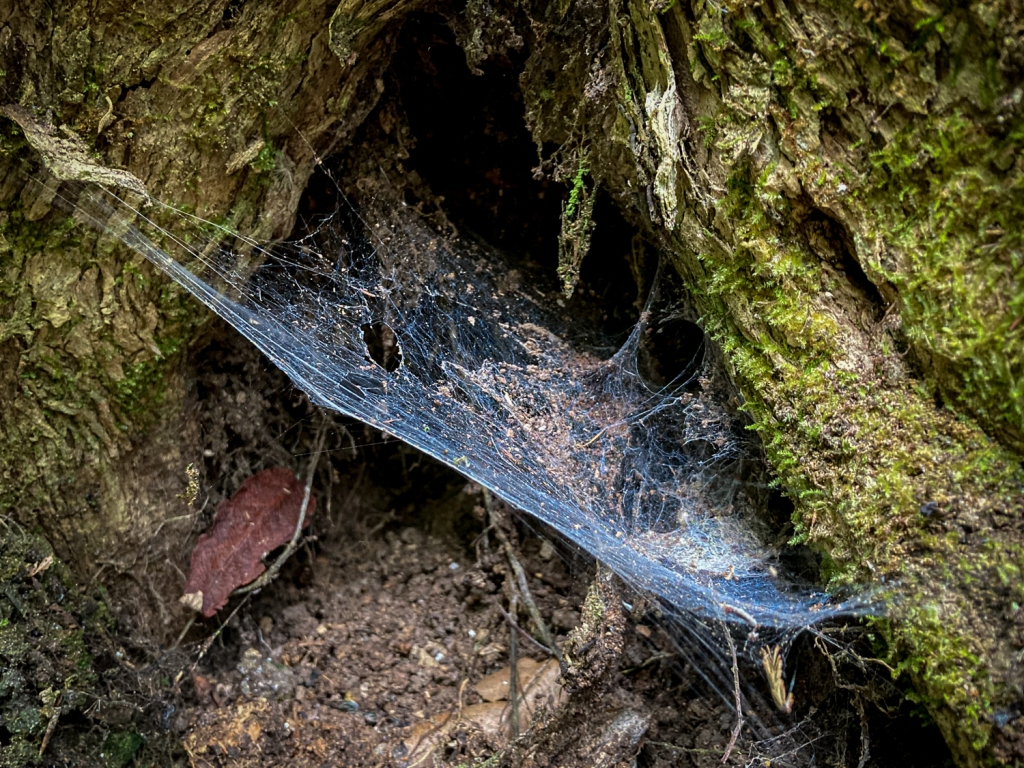
What did I do for the Earth this week?
A key message from one of the speakers at the platypus session was that it is not enough to enjoy the environment, We have to actively take care of it and protect it. This is something to keep in mind for next weekend’s state government election.
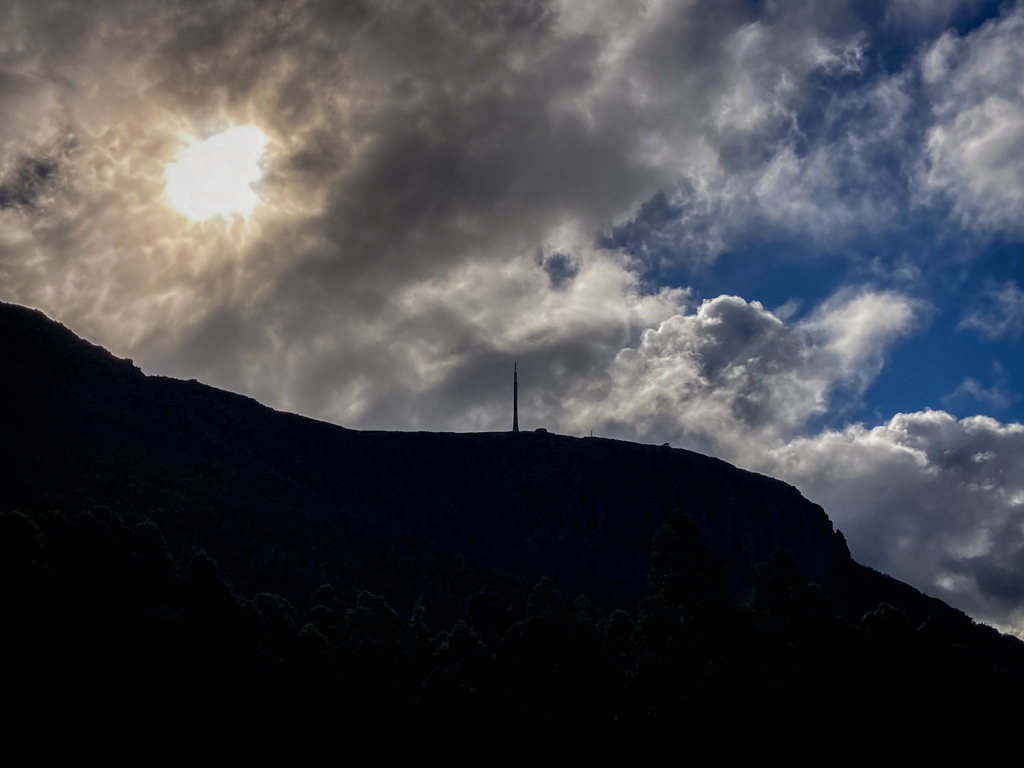
What I’m reading this week
- On Writing by Stephen King
- Dæmon Voices: On Stories and Storytelling by Philip Pullman
Habit tracker
- Days I did my morning planning routine at work (Goal = 5): 5
- Days I did my post-work pack up routine(Goal = 5): 3
- Days I worked on my art (Goal = 2): 2
- Days I read a book (Goal = 7): 7
- Days I did yoga stretches (Goal = 7): 6
- Days I had a lunch break away from my desk (Goal = 5 work days): 5
- Days I went for a walk or did other physical activity in the afternoon (Goal = 7): 2
- Days I shut my computer down before 10.15 (Goal = 7): 7

